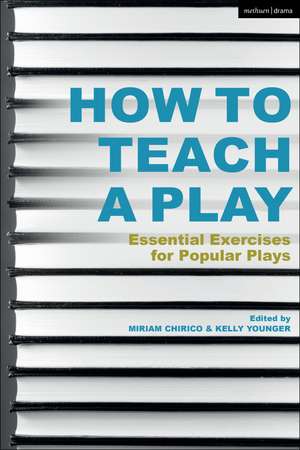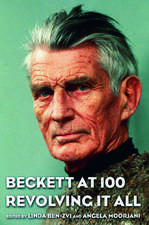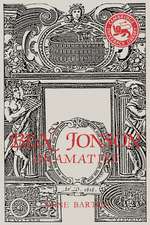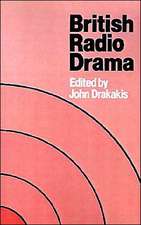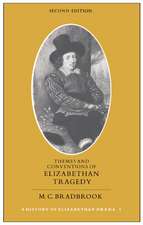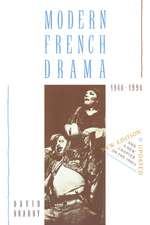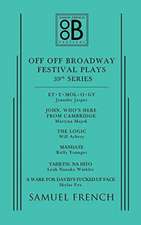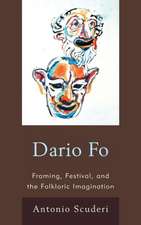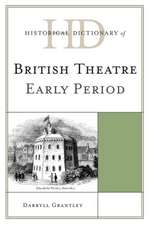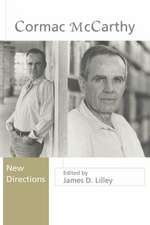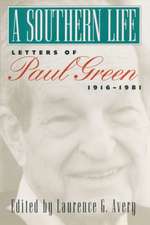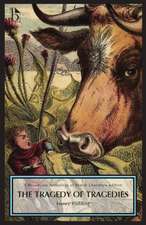How to Teach a Play: Essential Exercises for Popular Plays
Editat de Miriam Chirico, Kelly Youngeren Limba Engleză Paperback – 8 ian 2020
| Toate formatele și edițiile | Preț | Express |
|---|---|---|
| Paperback (1) | 175.39 lei 3-5 săpt. | +48.43 lei 7-13 zile |
| Bloomsbury Publishing – 8 ian 2020 | 175.39 lei 3-5 săpt. | +48.43 lei 7-13 zile |
| Hardback (1) | 541.71 lei 6-8 săpt. | |
| Bloomsbury Publishing – 8 ian 2020 | 541.71 lei 6-8 săpt. |
Preț: 175.39 lei
Preț vechi: 201.89 lei
-13% Nou
Puncte Express: 263
Preț estimativ în valută:
33.56€ • 35.04$ • 27.78£
33.56€ • 35.04$ • 27.78£
Carte disponibilă
Livrare economică 14-28 martie
Livrare express 28 februarie-06 martie pentru 58.42 lei
Preluare comenzi: 021 569.72.76
Specificații
ISBN-13: 9781350017535
ISBN-10: 1350017531
Pagini: 312
Dimensiuni: 156 x 234 x 24 mm
Greutate: 0.5 kg
Editura: Bloomsbury Publishing
Colecția Methuen Drama
Locul publicării:London, United Kingdom
ISBN-10: 1350017531
Pagini: 312
Dimensiuni: 156 x 234 x 24 mm
Greutate: 0.5 kg
Editura: Bloomsbury Publishing
Colecția Methuen Drama
Locul publicării:London, United Kingdom
Caracteristici
The exercises explore key scenes from the 75 most commonly taught plays in the US spanning two and a half millenia
Notă biografică
Miriam M. Chirico is Professor of English at Eastern Connecticut State University, USA. She is a Board Member of the Comparative Drama Conference and its journal, Text and Presentation, and has written extensively on modern and contemporary drama. Kelly Younger is Professor of English and Affiliate Professor of Theater Loyola Marymount University, Los Angeles, USA. He is the recipient of numerous teaching awards, including the Fritz B. Burns Professor of the Year. As a playwright, his work has been staged Off-Broadway and internationally. He is a Board Member of the Comparative Drama Conference and its journal, Text and Presentation.
Cuprins
AcknowledgmentsIntroduction The ExercisesHubris and Hamartia based on Aristotle's Poetics Agamemnon by Aeschylus The Eumenides by Aeschylus Antigone by Sophocles Oedipus the King by Sophocles Medea by Euripides Lysistrata by Aristophanes The Twin Menaechmi by Plautus The Second Shepherd's Play by The Wakefield MasterAtsumori by Zeami MotokiyoEveryman by AnonymousA Midsummer Night's Dream (I) by William Shakespeare A Midsummer Night's Dream (II) by William Shakespeare Romeo and Juliet by William Shakespeare The Merchant of Venice by William Shakespeare The Tragedy of Hamlet (I) by William ShakespeareThe Tragedy of Hamlet (II) by William ShakespeareThe Tragedy of Othello by William ShakespeareMeasure for Measure by William ShakespeareThe Tragedy of King Lear by William ShakespeareThe Tempest by William ShakespeareLife is a Dream by Pedro Calderón de la BarcaTartuffe by MoliereThe Misanthrope by MolièreRestoration Theater AudiencesThe Country Wife by William WycherleyThe Rover by Aphra BehnThe Way of the World by William CongreveThe School for Scandal by Richard Brinsley SheridanWoyzeck by Georg BüchnerA Doll's House by Henrik IbsenMiss Julie by August StrindbergHedda Gabler by Henrik IbsenThe Importance of Being Earnest by Oscar WildeThree Sisters by Anton ChekhovThe Cherry Orchard by Anton ChekhovPygmalion by George Bernard ShawTrifles by Susan GlaspellSix Characters in Search of an Author by Luigi PirandelloJuno and the Paycock by Sean O'CaseyMachinal by Sophie TreadwellThe House of Bernarda Alba by Federico García LorcaOur Town by Thorton WilderMother Courage and Her Children by Bertolt BrechtLong Day's Journey Into Night by Eugene O'NeillThe Glass Menagerie by Tennessee WilliamsDeath of a Salesman by Arthur MillerWaiting for Godot (I) by Samuel BeckettWaiting for Godot (II) by Samuel BeckettThe Crucible by Arthur MillerCat on a Hot Tin Roof by Tennessee WilliamsEndgame by Samuel BeckettThe Birthday Party by Harold PinterRhinoceros by Eugene IonescoA Raisin in the Sun by Lorraine HansberryThe Zoo Story by Edward AlbeeWho's Afraid of Virginia Woolf? By Edward AlbeeDutchman by Amiri BarakaThe Homecoming by Harold PinterThe House of Blue Leaves by John GuareDeath and the King's Horseman by Wole SoyinkaFefu and Her Friends by María Irene FornésAnd the Soul Shall Dance by Wakako YamauchiZoot Suit by Luis ValdezTrue West by Sam ShepardTop Girls by Caryl ChurchillCloud Nine by Caryl Churchill"Master Harold" . and the boys by Athol FugardGlengarry Glen Ross by David MametFences by August WilsonThe Other Shore by Gao XingjianThe Piano Lesson by August WilsonM. Butterfly by David Henry HwangFires in the Mirror by Anna Deavere SmithAngels in America, Part One by Tony KushnerInformation for Foreigners by Griselda GambaroOleanna by David MametRosencrantz and Guildenstern are Dead by Tom StoppardBlasted by Sarah Kane'Art' by Yasmina RezaHow I Learned to Drive by Paula VogelTopdog/Underdog by Suzan-Lori ParksDoubt: A Parable by John Patrick ShanleyDead Man's Cell Phone by Sarah RuhlWater by the Spoonful by Quiara Alegría HudesSweat by Lynn NottageVietgone by Qui Nguyen
Recenzii
[T]here are scores of great ideas in this book for enlivening plays in the classroom. These include guidelines for using specific gestures, music, props, costumes, as well as creating physical settings and paying attention to punctuation and blocking alongside other elements of a play.
Acknowledging the gap between the sometimes dry approach to dramatic texts in English and Literature classes (that often hold to the sanctity of the text) and the performance-happy lens that can often be found in drama classes, this book exists to serve both rooms with equal amounts of critical thinking and vision.
Rarely is the probable answer for most instructors for many reasons. They go on to ask 'Who wouldn't love to a be fly on the wall in someone else's classroom?' In essence, How to Teach a Play: Essential Exercises for Popular Plays, is the teacher of drama's opportunity to be the fly. Whether we teach drama courses, or drama in survey or literature courses, the activities and exercises in this book will open our eyes to new ways of approaching old materials and simple strategies for tackling complicated plays.
Acknowledging the gap between the sometimes dry approach to dramatic texts in English and Literature classes (that often hold to the sanctity of the text) and the performance-happy lens that can often be found in drama classes, this book exists to serve both rooms with equal amounts of critical thinking and vision.
Rarely is the probable answer for most instructors for many reasons. They go on to ask 'Who wouldn't love to a be fly on the wall in someone else's classroom?' In essence, How to Teach a Play: Essential Exercises for Popular Plays, is the teacher of drama's opportunity to be the fly. Whether we teach drama courses, or drama in survey or literature courses, the activities and exercises in this book will open our eyes to new ways of approaching old materials and simple strategies for tackling complicated plays.
